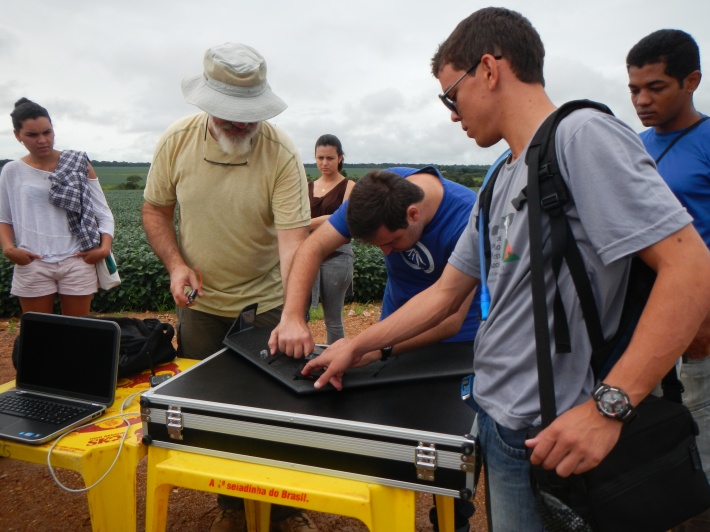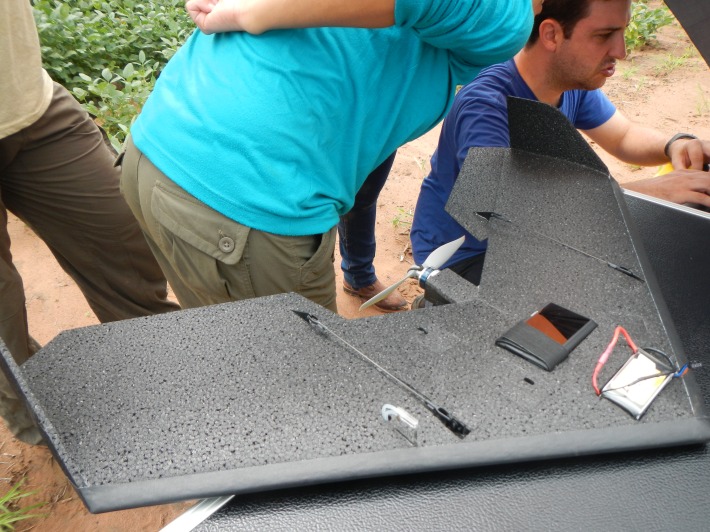So, reeeeaaaalllly big picture, what researchers do: ask questions, and then try to answer them. This week, one puzzle I was trying to solve was a great example of one tiny part of that process.
I’m here in Brazil in large part to measure nitrous oxide emissions, hoping to answer the question: how does land use affect the emissions regime and nitrogen cycle disruption of tropical soil? (Some more info here.)
To answer that question, I’m in charge of figuring out a protocol for how I’m going to measure nitrous oxide (N2O), when I’m going to measure it, how I’m going to process the data, eventually interpreting what the data tells me, and writing up the results. That, and several other projects, and I am hopefully deserving of a doctorate of philosophy (hey-o!).
N2O emissions are influenced by temperature, soil moisture, and the amount of available soil nitrogen, among other factors. When I’m designing an experimental protocol (i.e. when I’m going to sample and how), it’s bad news bears to vary many of those factors at once.
Last week, I turned to Paul and asked him the question, “so, do you think sampling in the morning is legit?” (Researchers: we’re less intense than you would think.) This post is about the quest to answer that question.
What might vary between the morning and afternoon that doesn’t vary day to day? Temperature. OK, how much does temperature vary throughout the day? And does “morning” (ehhhh, so imprecise!) do an ok job of estimating the average daily temperature?
We can answer that!
Check it out! Some data!

I mentioned last week that Paul and I put a thermocouple out into the forest and soy fields with the goal of taking some daily temperature data.
The graph above is the variation in temp in a soy field and in a shady forest over the course of several days, one of which was wicked rainy and one of which was wicked sunny. Let’s make the assumption that a rainy day and a sunny day can pretty much represents the rainy season here – not totally unreasonable.
I graphed the data (woot!) and calculated the daily mean soil temp in the two land uses (see the text just below the legend on the graph). You can see that the soy soil is, on average, warmer than the forest soil. No surprise there; it’s shady in the forest, and there’s leaf litter on the ground to help moderate temperature. (Side point that’s really cool – the soy soil also has much wider swings than the forest soil.)
Then I calculated the standard deviation of the daily temps in the two land uses, and the grey lines represent all the temps that fall BOTH within one standard deviation around the forest mean soil temp AND one standard deviation around the soybean mean soil temp. Where the graph falls between those lines, we’re within one standard deviation of the average daily soil temp of either soil – meaning we’re in the magical land of “representative daily temperature” for either land use. Meaning we’re good to go if I sample then. Huzzah!
What times of day are between the grey lines? Roughly, the morning hours (more specifically, between around 630 and 1130 am).
So, Paul, “do you think sampling in the morning is legit?” Answer: yes! Proceed, young grasshopper!
Answering that simple question took me a week: learning to use the thermocouple, setting the thermocouple up in the field, waiting a few days, removing the thermocouple from the field, downloading the data, putting the data in a graph and figuring out how to determine if the morning was ok, and, you know, deciding what colors to make the graph (fun!).
But…. problem solved! I won’t inadvertently mess up this project by sampling across a wide temperature gradient!
Science!!!!!!
In conclusion: that’s what I do for a living, and get to put “tropical ecosystem ecologist” on my business card. Sweet deal! :)










